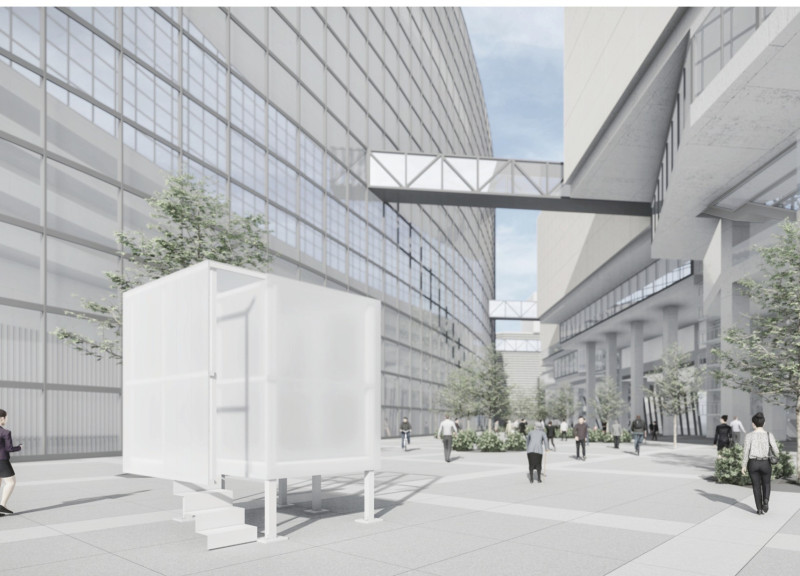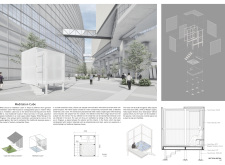5 key facts about this project
The Meditation Cube's form is a simple, cubic structure that employs a combination of translucent polycarbonate panels and a reflective metal frame. This material selection facilitates natural light diffusion while maintaining visual privacy, which is essential for a meditative space. The lightweight materials contribute to a minimalistic aesthetic, emphasizing clean lines and an unobtrusive presence amongst urban architecture.
The interior is intentionally sparse, including only essential components such as a single chair and a soft platform for sitting. This minimalism directs attention away from distractions, fostering a focused atmosphere conducive to meditation. The steel framework ensures structural integrity and stability while allowing for flexibility in placement within various public squares in Tokyo.
One unique aspect of the Meditation Cube is its reflection of the traditional Japanese concept of “Engawa,” a transitional space that merges the inside and outside. This design interpretation encourages interaction with the environment, inviting users to experience a seamless flow between the meditative interior and the urban landscape outside. The reflective qualities of the materials used allow the Cube to blend into its surroundings, enhancing this dialogue with nature and the built environment.
Another distinctive feature is its public accessibility; strategically located in bustling areas, the meditation cube transforms ordinarily overlooked public spaces into purposeful sites for personal reflection. Unlike traditional urban design that often prioritizes social interaction in public areas, the Cube creates zones specifically designated for introspection, redefining how urban inhabitants use public spaces.
The incorporation of steel, polycarbonate, and the possible use of wooden elements highlights a thoughtful approach to materiality that balances durability with sensory experience. The rippled texture of the steel flooring not only serves a functional purpose but also adds visual interest and tactile variation within the space.
In conclusion, the Meditation Cube offers a compelling architectural solution to the challenges of urban living by providing a dedicated space for mindfulness. This project exemplifies how architectural design can contribute to individual well-being in a public context. For further exploration of the design features, architectural plans, and sections of the project, please review the detailed project presentation to gain deeper insights into the innovative ideas that shape the Meditation Cube.























